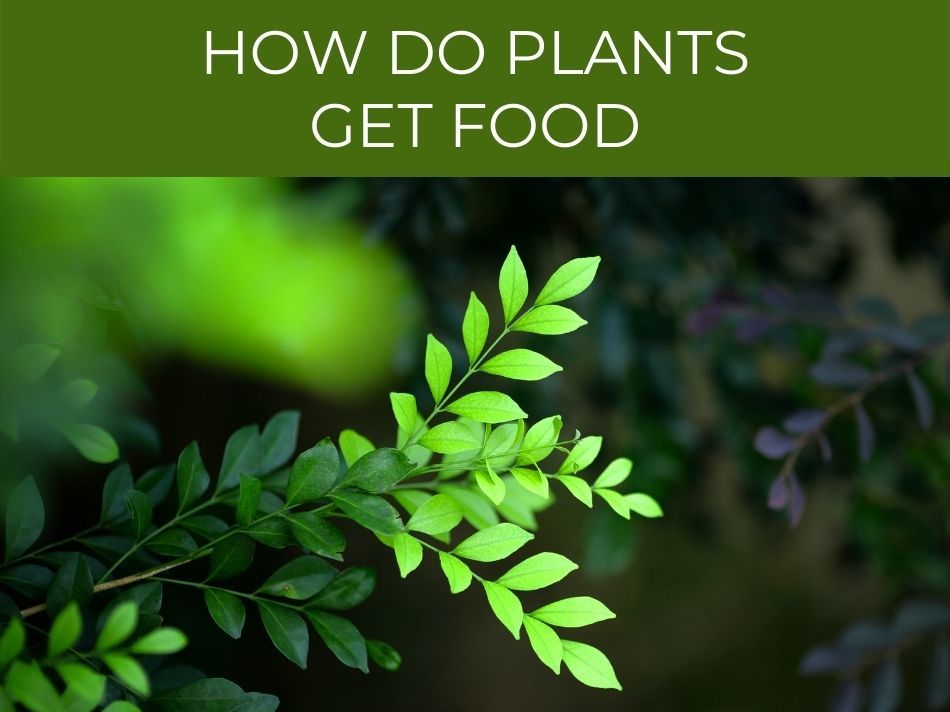Plants that hold leaves all year round are known as evergreens, while plants that lose their leaves in winter are called deciduous plants. This process is repeated year after year for the natural lifespan of the tree. So why are leaves so important?
One of the functions of a leaf is to make food for plants. This process is known as photosynthesis. During photosynthesis, the plant will take water from the soil, carbon dioxide (CO2) from the air, and sunlight to produce simple sugars (glucose) that the plant consumes for food.
Interestingly, not all plants have leaves; but they still go through the same processes: photosynthesis, respiration, and transpiration. Let’s dive in & find out the details!

Why are leaves important?
Nearly all plants have leaves, and they serve a crucial function for plants.
Leaves are important to plants because they are the main site of photosynthesis–the process where plants produce their own food. Plants use a process called photosynthesis to produce a sugar called glucose from water, air (carbon dioxide, CO2), and light, & give off oxygen as a byproduct.
The shape and size of a leaf serve different functions.
Leaves are elongated and round with the tips often pointing upward.
This is to make sure that the leaves don’t burn due to too much exposure to sunlight.
In addition, sunlight speeds up the process of photosynthesis.
The size of the leaf is important as it is the plant’s way of deciding how much sun exposure is needed for growth, survival, reproduction, etc.
Find out what the inputs of photosynthesis are.

What do leaves do for a plant
The leaves on a plant serve more functions than simply producing food.
Interestingly, the leaves are a plant’s primary resource for interacting with the atmosphere around it and extracting what the plant needs in order to survive.
Leaves serve 3 purposes for plants. Leaves produce food through a process called photosynthesis. In addition, leaves help to remove excess water from the plant through 2 processes called transpiration & guttation. Furthermore, leaves help plants to breathe through a process called respiration.
Both transpiration and guttation serve to dispel excess water from the plant.
However, the two processes are not exactly the same.
Transpiration expels excess water through very tiny pours found all over the surface of the leaf and are called stomata.
The water is released as vapor on the surface of the leaf.
Guttation dispels water through hydrophodes, which are basically the outer edges of the leaves, where more pores are located.
You may have noticed droplets forming on the outer edges of a leaf. This is called guttation.
Find out whether you should remove yellow leaves from a plant.

What is the main function of a leaf
While leaves serve various functions, there is one function that stands out as its main purpose.
While it is commonly understood that the roots of a plant draw moisture from the soil in which it is planted, this is not the main way of gathering food and energy for the tree/plant.
Regardless of whether the tree has leaves year round or only during spring and summer time, all leaves aim to keep trees and plants alive by sourcing food and energy for them.
The primary function of a leaf is to keep the plant alive. The leaves do this by producing food for the plant from water, air (carbon dioxide, CO2), and light. Without leaves, the plant is unable to breathe, eat, or dispel any unwanted moisture. All of which may cause the plant to die.
The leaves of a plant are known as its food factory.
This is proven by keeping a plant in a dark space where the leaves are unable to access sunlight. In addition, a healthy plant may be able to survive after losing a few leaves.
But, if a plant loses all of its leaves and is riddled with disease or has been neglected, that plant will die.
Though it needs to be mentioned that if the plant has healthy roots and receives proper care, it may still survive, even after losing all of its leaves.
This is a great article about where photosynthesis occurs in a plant.

How do plants obtain energy
Just like the importance of sourcing food, plants need energy in order to stay alive, and use their leaves to extract this energy.
Plants require energy to grow, reproduce, and most importantly, survive.
Like most living organisms, energy for plants is sourced through the food supply.
You may be wondering why plants need energy if they don’t even move, and that’s a great question to be pondering.
The main source of a plant’s energy comes from sunlight. During a process called photosynthesis, the plant traps energy from sunlight through its leaves. This energy is obtained by converting water and carbon dioxide into sugars known as glucose. Plants use this glucose for energy.
Light intensity is important for the process of photosynthesis.
Photosynthesis ensures that plants derive energy from this light source.
Even if a plant has sufficient carbon dioxide and moisture, the photosynthesis process will still be slowed down if the plant is unable to source a sufficient amount of sunlight.
Check out this article: Can plants grow without sunlight?

How do plants get food
While the process of photosynthesis has been discussed, did you know that there are plants that eat insects as a source of food?
One of the main reasons that these plants eat insects is poor soil.
The plants have sticky tentacles on their leaves and these tentacles trap insects that land on the plant.
Once the insect has died, the plant will slowly absorb the juices of the insect, thereby sourcing food.

Plants use sunlight to convert water and carbon dioxide to produce food. The food a plant converts from these 3 sources is known as glucose and starch. This process is defined as photosynthesis, which translates to mean ‘making out of light’.
All these elements of the food production chain need to be present in equal measure in order for the plant to produce food.
For example, if the plant sources a sufficient amount of water and carbon dioxide, but not enough sunlight, the process will be slowed down.
Alternatively, if the plant is able to source a sufficient amount of sunlight, but the roots are unable to extract the moisture from the soil, the process will also be slowed down.
Find out whether plants grow better in sunlight or artificial light.

What do plants eat
Plants don’t eat food, they make food.
Did you know that until modern times most people were unaware of what plants actually eat?
Many people throw manure on the ground believing that plants extract food from the manure, while other people spend hundreds of dollars buying soil mixtures in the hopes that the ingredients will feed the plant.
Plants produce food through a process called photosynthesis. This slightly complex process creates a sugar called glucose that the plant consumes as food and is converted into energy to keep the plant alive. Photosynthesis requires water, air (carbon dioxide, CO2), and light.
While manure and soil mix are responsible for providing the plant with some of the nutrients it needs in order to survive, it is sunlight, and sunlight alone, that is responsible for converting elements into a food source for the plant.
This food source known as glucose feeds the plant and gives it the energy it needs to grow.
Without sunlight, the plant is unable to produce the food it needs to stay alive.
Check out this article on the top soils to use for houseplants.

Why are leaves green
Summer time is the most beautiful season for trees.
In autumn, leaves turn into glorious shades of luminous gold, orange, and red.
But, did you ever wonder where leaves get their green color?
Leaves are green because of the chemicals that are in the leaves that give them that color. Chlorophyll is a pigment in leaves that is used to absorb rays from the sun. It is this pigment that transforms the hue of the leaves into beautiful shades of green.
While all leaves do contain the chemical chlorophyll, it is also true that not all parts of the leaf contain this chemical.
Some leaves are a mixture of green and yellow or green and white.
Only the green parts of these leaves are able to produce food through photosynthesis.

